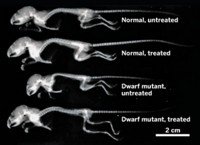Advertisement
Grab your lab coat. Let's get started
Welcome!
Welcome!
Create an account below to get 6 C&EN articles per month, receive newsletters and more - all free.
It seems this is your first time logging in online. Please enter the following information to continue.
As an ACS member you automatically get access to this site. All we need is few more details to create your reading experience.
Not you? Sign in with a different account.
Not you? Sign in with a different account.
ERROR 1
ERROR 1
ERROR 2
ERROR 2
ERROR 2
ERROR 2
ERROR 2
Password and Confirm password must match.
If you have an ACS member number, please enter it here so we can link this account to your membership. (optional)
ERROR 2
ACS values your privacy. By submitting your information, you are gaining access to C&EN and subscribing to our weekly newsletter. We use the information you provide to make your reading experience better, and we will never sell your data to third party members.
Biological Chemistry
Putting A Limit On Heart Attack Damage
Blocking a collagen-producing protein in mice reduces formation of scar tissue in the heart following a heart attack
by Sophie L. Rovner
December 22, 2008
| A version of this story appeared in
Volume 86, Issue 51
Scar tissue formed in the heart muscle contributes to the lasting physiological damage caused by a heart attack. A team of medical researchers has now uncovered details about scar tissue production that could lead to treatments that limit this damage (Nat. Cell Biol., DOI: 10.1038/ncb1811). Daniel S. Greenspan of the University of Wisconsin, Madison; Thomas N. Sato of Cornell University's Weill Medical College; and colleagues determined that the protein known as secreted frizzled-related protein 2 (sFRP2) enhances the activity of enzymes responsible for producing collagen, the main component of scar tissue. In the study, mice lacking sFRP2 formed less scar tissue and had better recovery of heart function after a heart attack than normal mice. The researchers are now hunting for compounds that interfere with sFRP2's activity and could help reduce inappropriate collagen formation. Greenspan notes that excess collagen formation occurs in other life-threatening diseases, such as cirrhosis of the liver and interstitial lung disease, which means sFRP2 could be involved in those diseases as well.




Join the conversation
Contact the reporter
Submit a Letter to the Editor for publication
Engage with us on Twitter